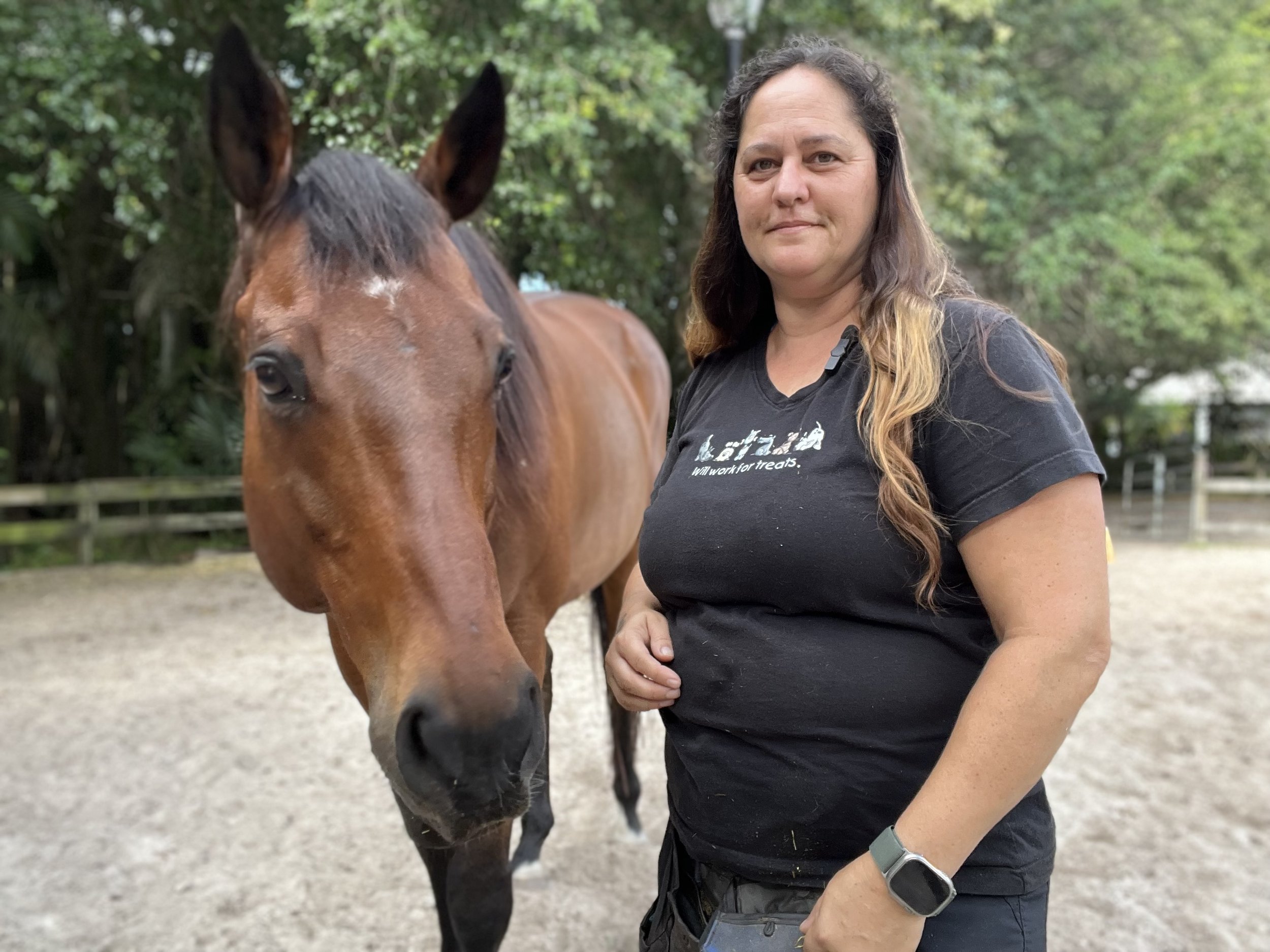“Food Manners” vs “Stand Facing Forward”
There seems to be some confusion surrounding the idea of teaching your equid ‘manners’ around food. The recommendation that I often see is for people to start with ‘food manners,’ i.e., teach your equid to stand next to you, either facing forward or with their head turned away.
Although standing face forward next to you is an excellent behavior to train as your equid’s default behavior, that’s all it is—a single behavior.
Food Manners
‘Food manners’ is a label that encompasses a group of behaviors that are determined by the individual and what’s important to them when it comes to their equid’s behavior around food. The reason why we start with standing face forward is that it is a simple behavior that comes naturally for the animal, and we can begin teaching them that they don’t have to look for the food; the food comes to them.
Where people run into trouble is when they start thinking that once they’ve taught their equid to stand next to them calmly and wait for the food to come to them, their equid’s food manners are complete. When they start walking and their equid’s ‘food manners’ fall apart, they’re left wondering why.
Food manners develop over time, across the training of multiple behaviors, and require consistency in timing and in the way you feed your equid, regardless of what you’re working on. Training a stand-facing-forward behavior in protected contact is a great place to start, but those behaviors (the equid’s) and skills (yours) have to be maintained as you build on that foundation and move out of protected contact. Teaching your equid manners around food doesn’t end when you finish teaching them to stand facing forward.
Protected Contact
Protected contact is often dropped once the initial stand-facing-forward behavior has been achieved; however, it can be a great way to break up the jump in criteria that happens when going from a stand to a walk. Although your equid understands that the food comes to them when they’re standing still, that doesn’t mean they know that the food still comes to them when they’re walking, so you’ll need to teach that as well. I will often start training a stand-facing-forward behavior in protected contact, then go over it again in free contact, then go back to protected contact once we’re ready to start walking. When walking in protected contact is solid, then we’ll go back to free contact again.
Consistency Is Key
Working on other behaviors can also be a considerable jump in criteria for the person. I see videos all the time of people using perfect timing and delivery mechanics when their equid is in a stand-facing-forward position, but those skills go out the window as soon as they start working on something else. Suddenly they’re reaching for the food before the click, feeding the equid close to their body, and generally forgetting to maintain all of the things that helped make the stand-facing-forward behavior successful.
Consistency in the way you deliver reinforcement to your equid will determine how they behave around you when you’re carrying food. If the way you deliver food changes all the time, it will be confusing for your equid, and you’ll get a lot more of those pushy, muggy behaviors that make people stop training with food. Even randomly feeding your equid treats ‘just because’ needs to be done with some thought to how you’re delivering the treat. There should be no difference in how you deliver free treats to how you deliver reinforcers.
Changing Things Up
This is not to say that you can never change the way you deliver reinforcement to your equid. On the contrary, you may find that sometimes you’ll want to deliver reinforcement in a bucket where you are, sometimes from your hand right where you are, and sometimes you may want to deliver reinforcement at a distance from where you are. This is possible! It just means that you’ll need to spend a little extra time teaching your equid each of these food delivery methods and making sure that you’re clearly communicating which delivery method you’re using at any given moment.

